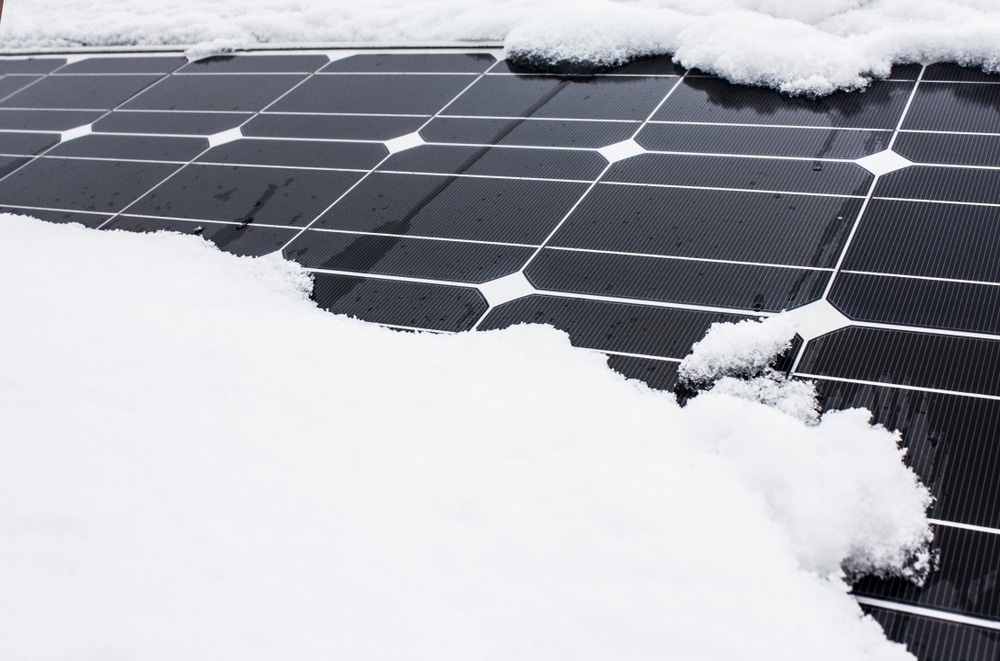The University of Ottawa SUNLAB team has improved the accuracy of measurements of bifacial solar panels.

Image Credit: GGG999/Shuttertsock.com
The University of Ottawa’s laboratory in photonics and renewable energy has created a new way for quantifying the solar energy generated by bifacial solar panels, the double-sided solar technology that is anticipated to fulfill rising global energy demands in the future.
The research was published in the journal Joule and describes a characterization technique that will enhance the evaluation of bifacial panels indoors by taking into account external impacts of ground cover like snow, grass, and soil. This will allow for consistent testing of bifacial solar panel performance indoors, which will precisely represent how the panels could operate outdoors.
With bifacial photovoltaics predicted to meet more than 16% of global energy demand by 2050, SUNLAB’s approach will enhance international device measurement standards, which now do not distinguish between ground cover.
Our proposed characterization method, the scaled rear irradiance method, is an improved method for indoor-measuring and modeling of bifacial devices that is representative of outdoor environmental conditions.
Erin Tonita, Study Lead Author and Ph.D. Student, Physics, University of Ottawa
Erin Tonita is researching under Professor Karin Hinzer, whose research group explores new ways to harness the sun’s energy.
Incorporating this new method into future bifacial standards would provide a consistent methodology for testing bifacial panel performance under ground conditions including snow, grass, and soil, corresponding to globally varying illumination conditions.
Erin Tonita, Study Lead Author and Ph.D. Student, Physics, University of Ottawa
The study of transforming solar energy into electricity using semiconducting materials like silicon is known as photovoltaics. The semiconducting material in bifacial solar panels is wedged between two sheets of glass to enable sunlight collection on both sides, with one side generally inclined towards the sun and the other towards the ground.
The extra light received by bifacial solar panels on the backside provides an advantage over conventional solar panels, with manufacturers claiming up to a 30% increase in production over traditional solar panels. Bifacial solar panels are also more robust than regular panels and can produce power for over 30 years.
“Implementation of this method into international standards for such panels can enable predictions of outdoor bifacial panel performance to within 2% absolute,” states Tonita, who anticipates that the benefits of this method include:
- Enabling comparisons between the present and emerging bifacial technologies.
- Expanding the deployment of solar panels in non-traditional markets.
- Enhancing bifacial panel manufacture datasheets.
- Improving performance through ground cover specific design optimization.
- Lowering investment risk in bifacial panel deployments.
This method is of particular importance as renewable energy penetration increases towards a net-zero world, with bifacial photovoltaics projected to contribute over 16% of the global energy supply by 2050, or around 30,000 TWh annually.
Karin Hinzer, Professor, School of Electrical Engineering and Computer Science, University of Ottawa
Karin Hinzer is the founder of SUNLAB, and is the University Research Chair in Photonic Devices for Energy.
Hinzer, whose SUNLAB investigators collaborated with Arizona State University for the research, concludes, “This will extend current International Electrochemical Commission standards for bifacial solar panel measurements, enabling accurate comparisons of bifacial panel technologies, application-specific optimization, and the standardization of bifacial panel power ratings.”
Journal Reference:
Tonita, E. M., et al. (2023) A general illumination method to predict bifacial photovoltaic system performance. Joule. doi.org/10.1016/j.joule.2022.12.005.